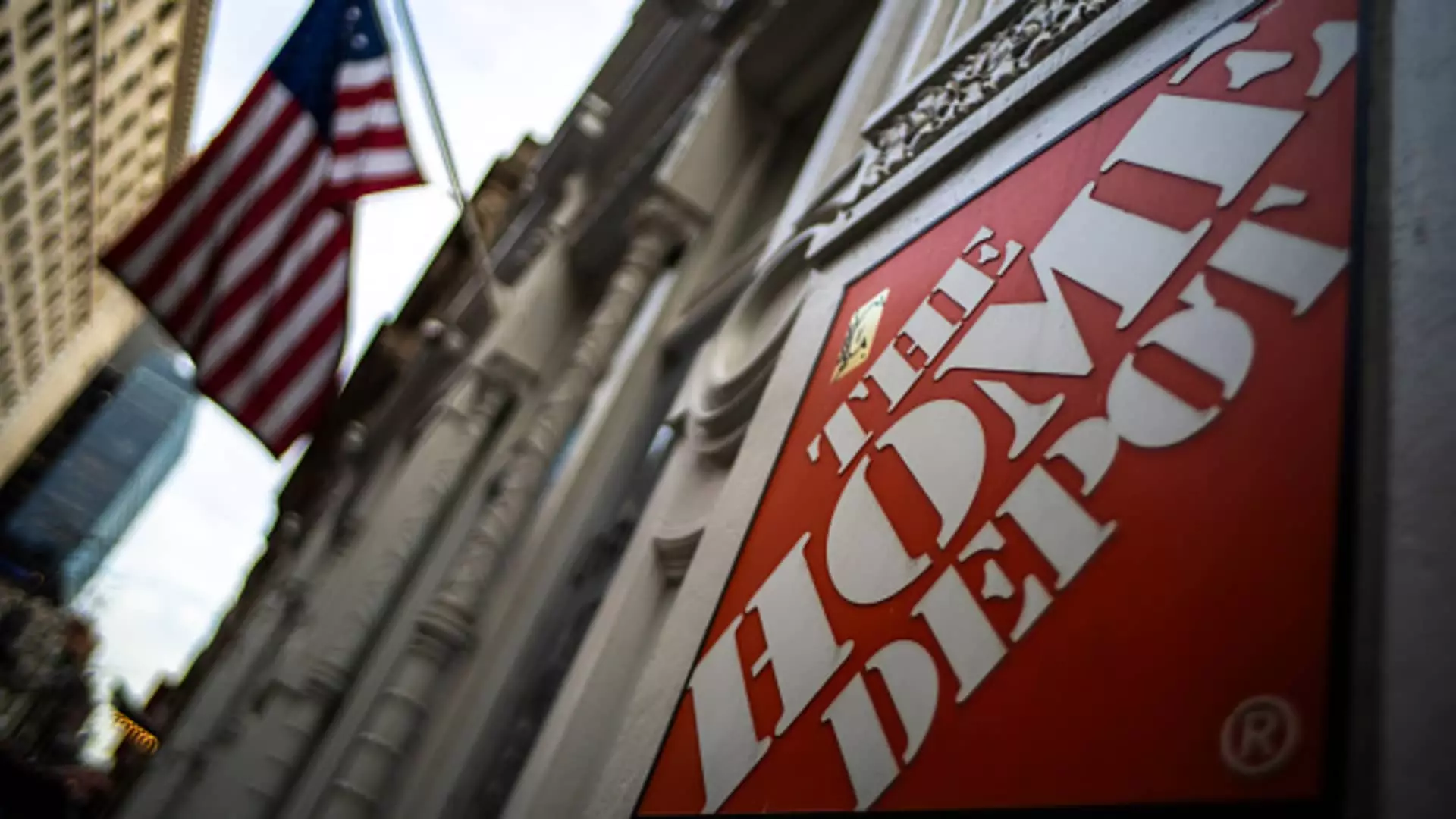Home Depot’s upcoming quarterly report will inevitably shed light on its ability to withstand a sluggish housing market and geopolitical uncertainties. Despite managerial claims of steady growth, beneath the surface lies a fragile economy grappling with persistent challenges. The retail giant relies heavily on a niche of professional contractors—roofers, landscapers, and builders—who themselves are navigating turbulent waters. This strategic pivot away from traditional DIY homeowners suggests an uneasy recognition that the core consumer isn’t as buoyant as before. The revenue forecast of $45.36 billion and earnings per share of $4.71 are ambitious targets that, frankly, seem overly optimistic given the current economic headwinds. The broader market conditions—rising interest rates, fluctuating tariffs, and a slowing housing market—cast long shadows over these projections.
Housing Weakness and Consumer Hesitation
For more than two years, Home Depot executives have been vocal about the slowdown in large-scale home improvement projects. The fundamental driver behind this hesitance is the metalogic of economic restraint: higher borrowing costs choke demand. When consumers face steep mortgage rates or credit constraints, frivolous or even necessary upgrades become less appealing. Ted Decker, the current CEO, attempts to portray resilience, emphasizing that people are still engaging in smaller projects like yard work and painting. However, this is a remarkably narrow silver lining; it’s akin to celebrating the crumbs while the main feast remains out of reach. The notion that homeowners are simply doing “smaller projects” masks a deeper malaise—one that threatens to stifle growth for companies heavily dependent on this sector.
Strategic Shifts in Business Model: Beyond the Homeowner
In response, Home Depot has pivoted strategically toward professional trade clients, exemplified by its acquisitions of SRS Distribution and GMS. These moves reflect a recognition that sustained growth may now lie outside traditional retail channels. Professionals, after all, are less deterred by interest rate hikes—they still need roofing, landscaping, and building supplies regardless of macroeconomic challenges. Yet, this pivot raises questions about the company’s long-term stability. It hints that the consumer market may have permanently weakened, forcing Home Depot into a more B2B-oriented approach. However, this approach introduces its own risks: a potential overreliance on a niche market that might not compensate for declining consumer spending, especially if economic uncertainties persist or intensify.
Tariffs and Diversification: Navigating a Political Minefield
One of the most precarious aspects of Home Depot’s outlook is its exposure to international trade policies. After years of fluctuating U.S. tariffs, the company has taken proactive steps to diversify supply chains, aiming to ensure no single country dominates its imports. The goal of reducing China’s share below 10% by 2026 reflects a cautious attempt to hedge against geopolitical risks. Still, such diversification isn’t a silver bullet. As tariffs fluctuate, so too does the cost structure, jeopardizing margins. Home Depot’s decision not to hike prices contrasts sharply with competitors like Walmart, which have already signaled price hikes due to tariff pressures. This may attract short-term customer loyalty but could also eat into profit margins if tariffs continue to rise or become more unpredictable. The prolonged trade negotiations and tariff changes signal that the retail giant is operating in a limbo—a sustained period of strategic adjustment amid uncertainties.
A Center-Wing Liberal Perspective: Balancing Growth and Risks
From a centrist liberal viewpoint, Home Depot’s cautious stance is both sensible and necessary. It recognizes that unfettered growth without attention to macroeconomic conditions, supply chain stability, and geopolitical risks is irresponsible. While the company’s leadership demonstrates resilience, the reality remains stark: economic headwinds threaten to sever the vitality of traditional retail markets. The deliberate shift away from price hikes and a diversified supply chain showcase prudent management, but they also highlight a cautious acknowledgment that economic turbulence is unlikely to abate soon. The blueprints for future success must incorporate risk mitigation strategies that prioritize stability over aggressive expansion, especially in a climate where political disputes and international trade disputes continually threaten operational continuity. Only through such measured steps can Home Depot solidify its position without falling victim to falling demand or unpredictable tariffs.

